Scan barcode
ppetropoulakis's review against another edition
4.0
A series of stories from the eyes of the other Noh agents that Kabuki has encountered. Very interesting art and characters that are gripping and mystical.
patchy_at_best's review against another edition
3.0
The Kabuki series opened my eyes to the boundless potential of the graphic novel genre. Not only is the plot the definition of epic, but its gorgeous art style destroys expectations. The core of Kabuki is personal transformation – rewriting one’s identity, history, and culture to live a new narrative. It explores the binary of inner/outer self, with the motif of masks to protect/represent true self. I’ve lost count of all the times I’ve raved about this series to friends. It is an unforgettable contribution to the “war of art”.
CHARACTERS & KEY MOTIFS
The character of Kabuki is unravelled layer by layer throughout the series. In Vol. 1 Circle of Blood, she is a government assassin, hiding in plain sight as Noh TV’s Big Brother-esque weather reporter (“media as a manufacturer of public consent”). As a child, her identity was defined by her shameful facial scar, referencing her murdered mother the Kabuki dancer. Now, her Kabuki mask is her trademark and a motif vital to her story of transformation. Her narrative of fighting death to rewrite her future is powerfully uplifting to anyone who has lost sight of the light at the end of the tunnel.
Kabuki features a cast of deadly female characters, of whom we only get to the see the tip of the iceberg. In Vol 3. Masks of the Noh and Vol. 7 Scarab, Lost in Translation, each of the Noh operatives are portrayed by a different artist, with the aim to express their individuality through unique art styles. This technique made me mindful of each character having their own private world beyond the main Kabuki plot line.
THE WAR OF ART
When I first started reading graphic novels, I held expectations based on genre stereotypes – think panels, speech bubbles, and black and white art. However, the art of Kabuki surpasses my wildest expectations. In fact, Mack makes art like he’s never faced a boundary in his life. While the volumes are congruent as a series, each plays with whatever mediums best communicate the heart of that particular chapter. For example, Vol. 1 is an electrifying theatre of dark and light, while Vol. 2 Dreams… drifts between life and death. Kabuki’s subconscious thought is represented by surreal mixed modal paintings, blending water colour, paper cut outs, photography, and lace. My personal favourite is the very “meta” Vol. 7 The Alchemy, which celebrates as many textures and dimensions as you can imagine.
Just as the art goes over the lines, so does the story. When Akemi introduces Kabuki to the “war of art” in Vol. 7, it becomes clear that the series aims to be a subversive, stimulating contribution to culture – blurring reality and transcending the boundaries of traditional storytelling.
As a reader and as a content creator, Kabuki motivates me to look deeply at the world, and see past perceived boundaries to my creativity and identity. Keep Kabuki on your to-read or re-read list for any day you need to stoke your life’s fire.
This review can also be found on my blog Paige's Pages.
CHARACTERS & KEY MOTIFS
If you don’t like the story your culture is writing… It’s not enough to say you don’t subscribe to it… You have the obligation of writing your own story… To be a contributing author of your own culture – Kabuki Vol 7. The Alchemy
The character of Kabuki is unravelled layer by layer throughout the series. In Vol. 1 Circle of Blood, she is a government assassin, hiding in plain sight as Noh TV’s Big Brother-esque weather reporter (“media as a manufacturer of public consent”). As a child, her identity was defined by her shameful facial scar, referencing her murdered mother the Kabuki dancer. Now, her Kabuki mask is her trademark and a motif vital to her story of transformation. Her narrative of fighting death to rewrite her future is powerfully uplifting to anyone who has lost sight of the light at the end of the tunnel.
I didn’t have to be labeled by my scars, my job, my lineage, or my history. Once I learned to free myself on the inside, I became free on the outside as well – Kabuki Vol. 7 The Alchemy
Kabuki features a cast of deadly female characters, of whom we only get to the see the tip of the iceberg. In Vol 3. Masks of the Noh and Vol. 7 Scarab, Lost in Translation, each of the Noh operatives are portrayed by a different artist, with the aim to express their individuality through unique art styles. This technique made me mindful of each character having their own private world beyond the main Kabuki plot line.
The revolution is the action not the subject. Once the revolution becomes the institution, you have to revolt and revolve, all over again. Stagnation is death. Status quo is death. Celebrity is death. Once a government or agency is set up to worship itself and make itself richer, and forget the ideas it is founded on, it is no longer for the people, or by the people – Kabuki Vol. 7 The Alchemy
THE WAR OF ART
When I first started reading graphic novels, I held expectations based on genre stereotypes – think panels, speech bubbles, and black and white art. However, the art of Kabuki surpasses my wildest expectations. In fact, Mack makes art like he’s never faced a boundary in his life. While the volumes are congruent as a series, each plays with whatever mediums best communicate the heart of that particular chapter. For example, Vol. 1 is an electrifying theatre of dark and light, while Vol. 2 Dreams… drifts between life and death. Kabuki’s subconscious thought is represented by surreal mixed modal paintings, blending water colour, paper cut outs, photography, and lace. My personal favourite is the very “meta” Vol. 7 The Alchemy, which celebrates as many textures and dimensions as you can imagine.
Just as the art goes over the lines, so does the story. When Akemi introduces Kabuki to the “war of art” in Vol. 7, it becomes clear that the series aims to be a subversive, stimulating contribution to culture – blurring reality and transcending the boundaries of traditional storytelling.
Each letter is alive and fertile with intent of the idea… That is unlocked and activated when someone reads it … You must accept your role in the energy exchange by passing on your truth or story to those willing to unlock and open… and unfold that in themselves… Part of the global War of Art – Kabuki Vol. 7 The Alchemy
As a reader and as a content creator, Kabuki motivates me to look deeply at the world, and see past perceived boundaries to my creativity and identity. Keep Kabuki on your to-read or re-read list for any day you need to stoke your life’s fire.
This review can also be found on my blog Paige's Pages.
kfan's review against another edition
4.0
Totally good. I guess some David Mack purists would complain about him not doing the art for this book, but I like that he uses different artists for the different Noh agents. The art for Ice is my favorite. And this is the first time that you really get a sense of the personalities of the different agents (Snapdragon: still super creepy), so it is all aces with me.
daviddavidkatzman's review against another edition
5.0
Kabuki is a series about transformation. Yes, it has beautiful art. Yes, it has great writing. And while the central theme of the narrative is transformation, what I found even more powerful is the way the art of the stories transforms from collection to collection, seeming to mirror the character’s evolution.
I have met David Mack a couple times at Comicon, and I’ve been meaning to ask him if he always intended from the beginning for the story to be about transformation and to move from standard comic style to collage. I like to think that it’s something he came up with as he went along, and the writing of the story transformed as he developed it. That the book evolved him as the story itself evolved.
On a plot level, the story begins in rather mainstream comic fashion. Kabuki is set slightly in the future, primarily in Japan. The main character, Kabuki, is one of a group of eight female assassins called The Noh who wear iconic masks and stylized costumes. They are a team managed by the government and sent out to instill fear and kill gangsters and various corporate criminals. However ... not all is as it appears. A multi-layered conspiracy ensues. Seven graphic novels complete the story.
[b:Kabuki Circle of Blood|89816|Kabuki, Vol. 1 Circle of Blood|David W. Mack|https://d202m5krfqbpi5.cloudfront.net/books/1386924796s/89816.jpg|1027]. Mack wrote and drew. Black & white. Has a grim, raw style. The art seems a bit underdeveloped to my eye. Has a bit of Sin City tone but more surreal. With more emphasis on emotions. The story is overall, fairly straightforward to this point.


[b:Kabuki Dreams|89813|Kabuki, Vol. 2 Dreams|David W. Mack|https://d202m5krfqbpi5.cloudfront.net/books/1388629721s/89813.jpg|86681]. Mack wrote and drew. Takes a huge leap forward in style and has more of the Mack signature look. Collage style begins, color is introduced. Blends pencil sketching, ink drawings, painting and even photography. This is a book of interior monologue and, as the title would lead you to believe, is trippy.
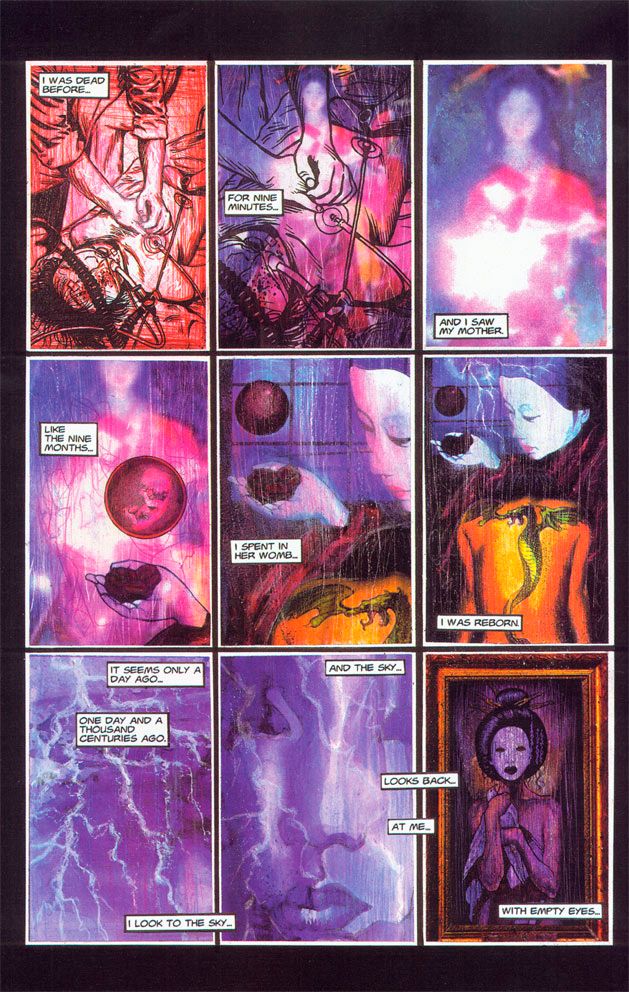
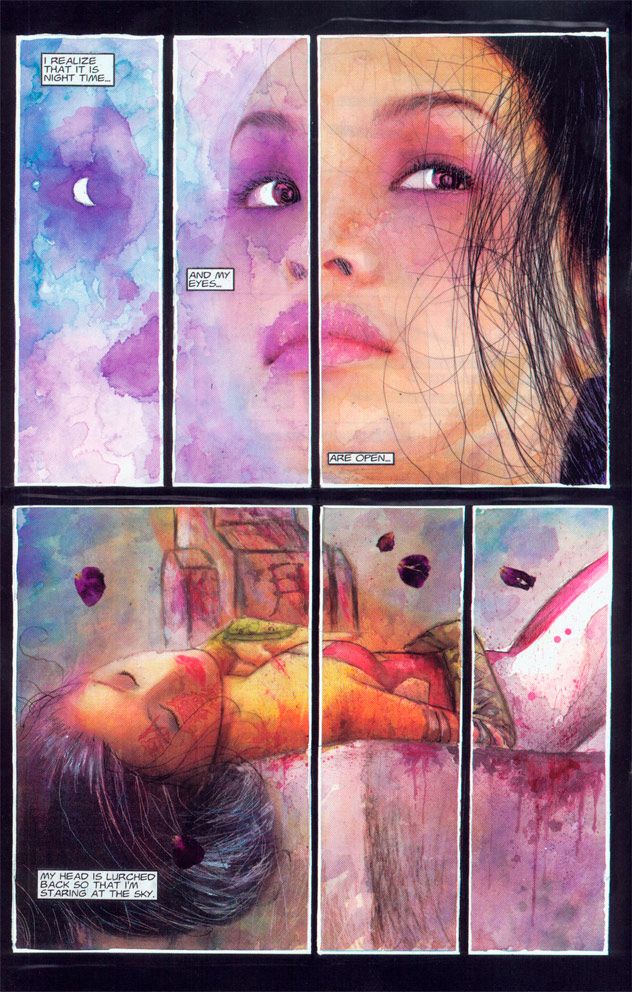
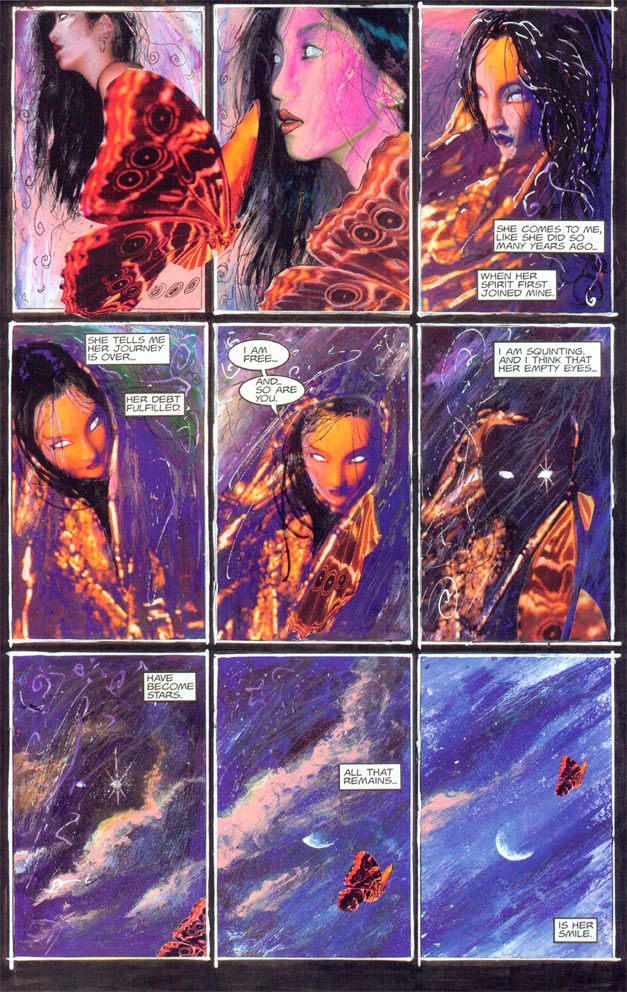
[b:Kabuki Masks of Noh|743521|Kabuki, Vol. 3 Masks of the Noh|David W. Mack|https://d202m5krfqbpi5.cloudfront.net/books/1390064424s/743521.jpg|729672]. Mack writes and draws some scenes, but this is primarily guest drawn. The style returns to black & white, but overall more refined, precise and graphic than Circle of Blood. Rick Mays draws a pretty phenomenal Scarab. The various artists seem to be chosen to help represent the style of each of the assassins. This sequence consists of short stories introducing us further to the other members of the Noh.
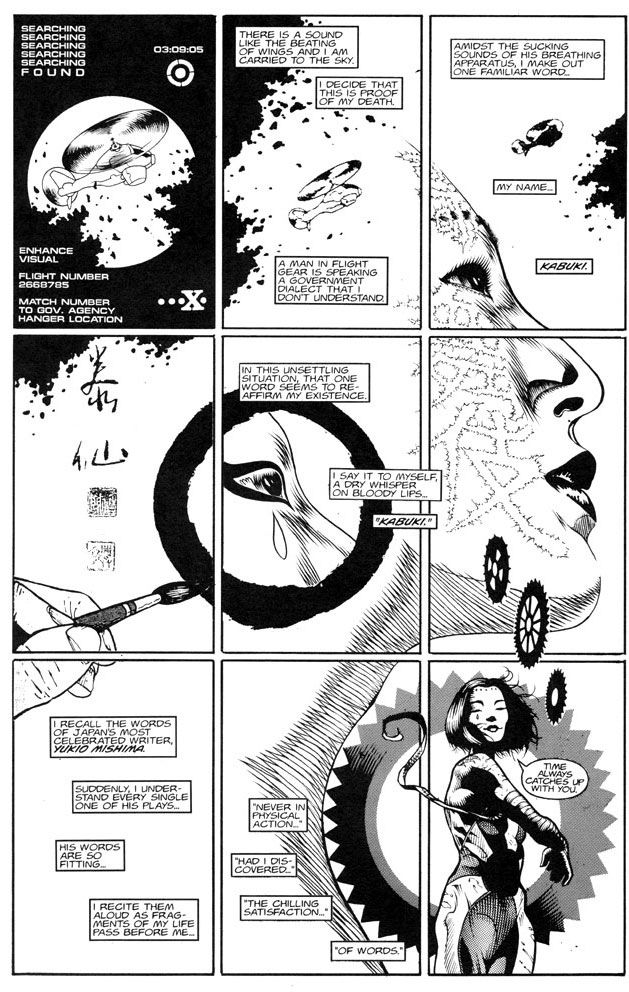
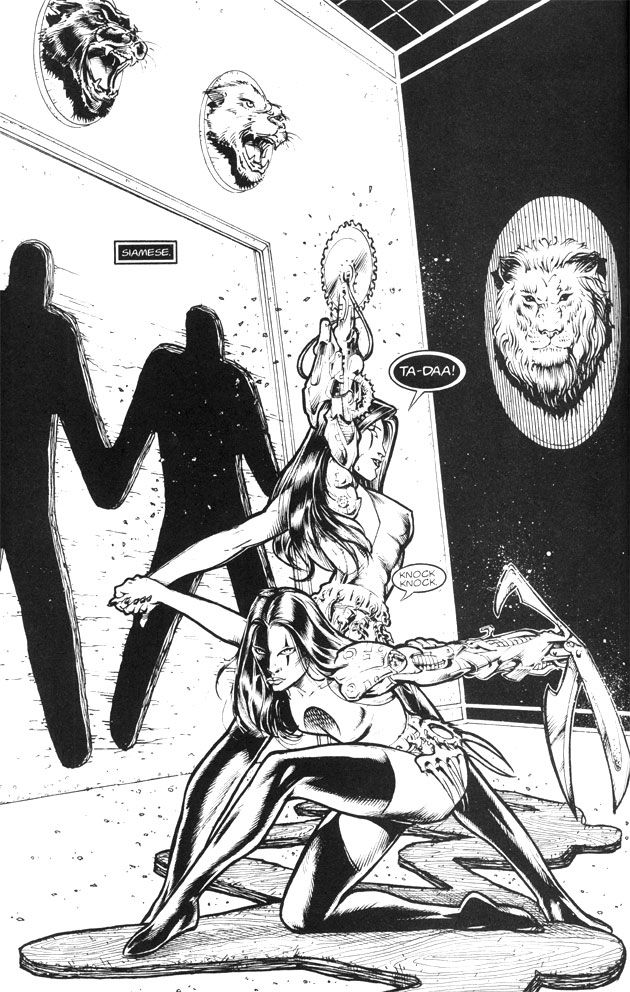
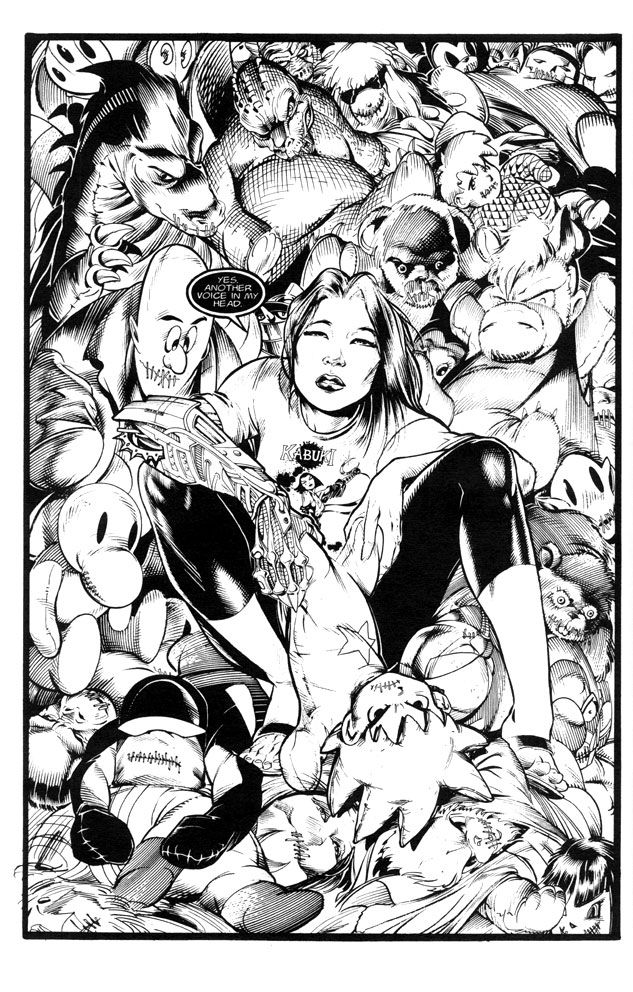
[b:Kabuki Skin Deep|89814|Kabuki, Vol. 4 Skin Deep|David W. Mack|https://d202m5krfqbpi5.cloudfront.net/books/1347219865s/89814.jpg|440299]. Mack returns to both draw and write. In Skin Deep his incredible artistic skills beginning to shine. He can morph like a chameleon from cartoonish renderings to realist representational paintings to pencil sketches.
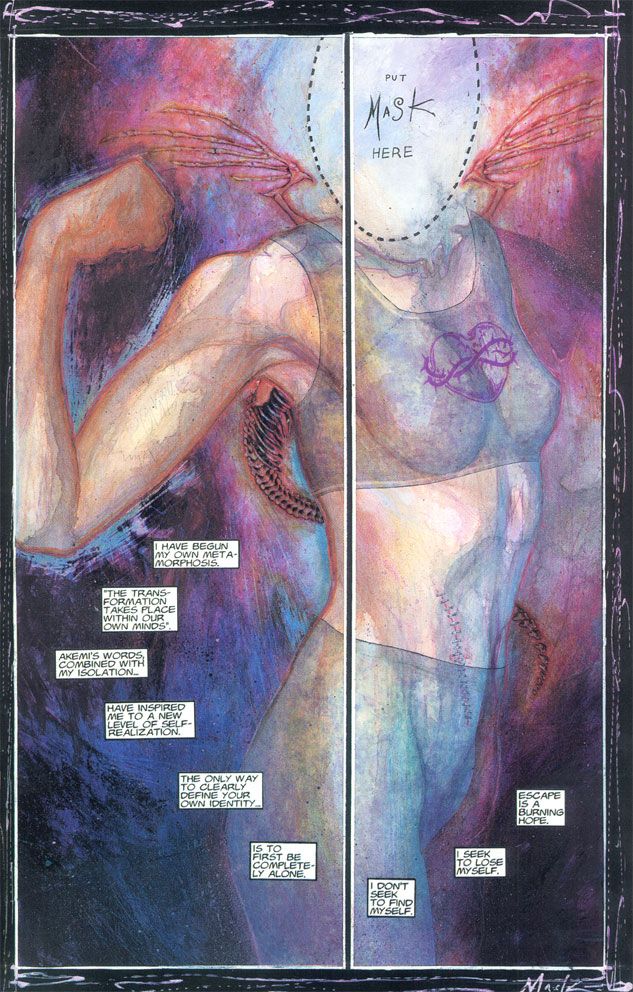
[b:Kabuki Metamorphosis|89815|Kabuki, Vol. 5 Metamorphosis|David W. Mack|https://d202m5krfqbpi5.cloudfront.net/books/1347660123s/89815.jpg|18787]. Mack writes, draws, letters and designs. For the sheer brilliance on display, I think Metamorphosis is the most beautiful of the series and my favorite. The diversity of techniques is breathtaking.
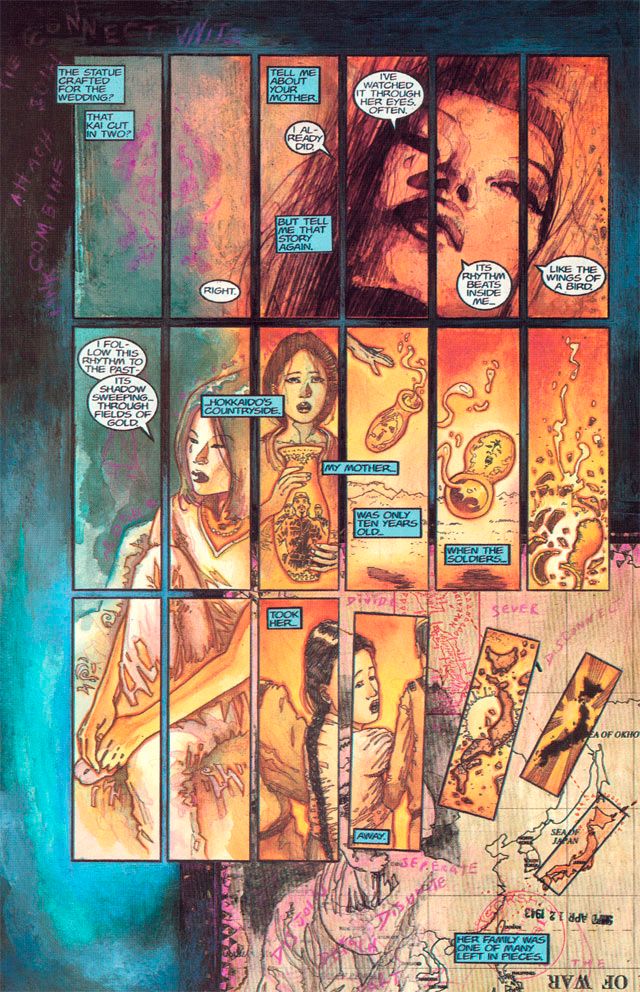
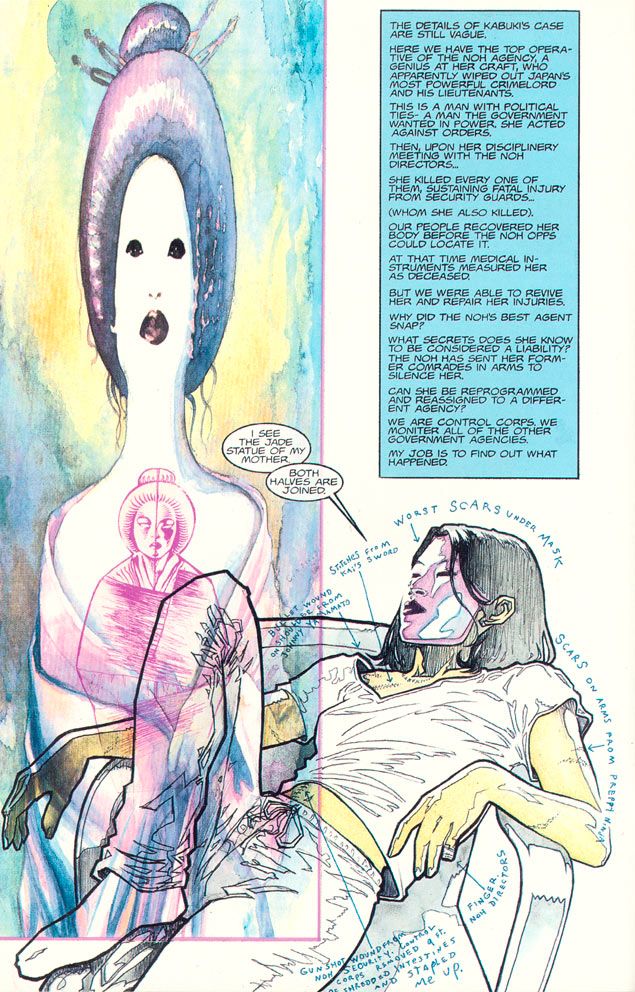

[b:Kabuki Scarab Lost in Translation|98454|Kabuki, Vol. 6 Scarab, Lost in Translation|David W. Mack|https://d202m5krfqbpi5.cloudfront.net/books/1347752395s/98454.jpg|94908]. An action-packed side-step featuring everyone's favorite assassin, Scarab. Illustrated in graphic black & white by Rick Mays, the coolest artist from the Masks collection. Just as the art harkens to outstanding comic illustration style, it doesn't push the envelope in content or technique. A fun diversion.

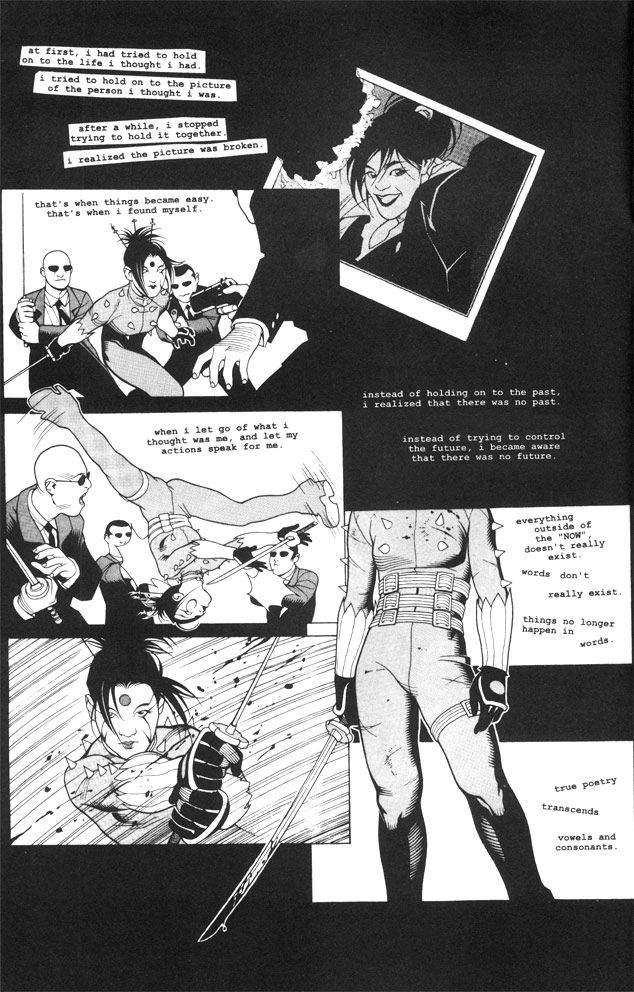
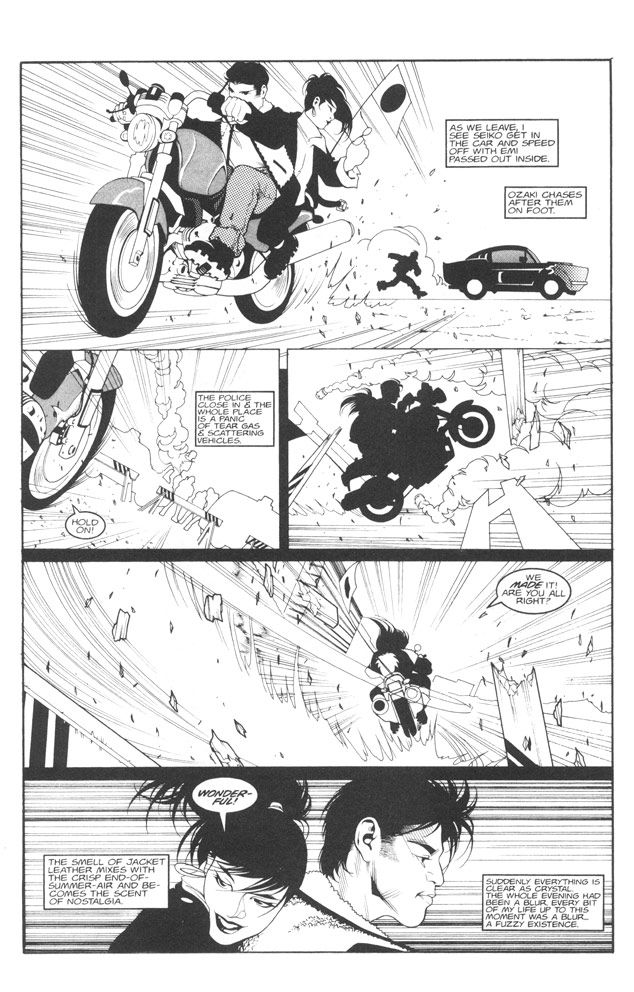
[b:Kabuki The Alchemy|3155976|Kabuki, Vol. 7 The Alchemy|David W. Mack|https://d202m5krfqbpi5.cloudfront.net/books/1347738255s/3155976.jpg|3187674]. Mack takes his signature collage style even further, using cut up items and diverse materials including envelopes and letters sent to him from fans of the series to tell the existentialist, inspirational conclusion of Kabuki's epic story. Although visually, I prefer Metamorphosis, I truly admire The Alchemy for showing the potential of comics. Yes, many artists like R. Crumb and Chris Ware have achieved fame for non-superhero stories. But Mack essentially demonstrates the potential before our eyes to move beyond the dictates of the superhero form. A series that begins with ultra-violent superhumans fighting battles for stereotypical reasons ends with artistic explorations of our inner potential as creative beings. Kabuki moves beyond standard comic book “hero” tropes into a story of heroic action as self-transformation, moving beyond the dictatorship of the system, the fear of change and the psychological control of the past. The hero is one who evolves not one who kills everything. And Mack says we each have the potential, regardless of what has come before, to evolve. Perhaps best of all, the transformation that takes place goes much further than within the narrative; it is a transformation of the form of graphic storytelling. Now that is truly inspirational.

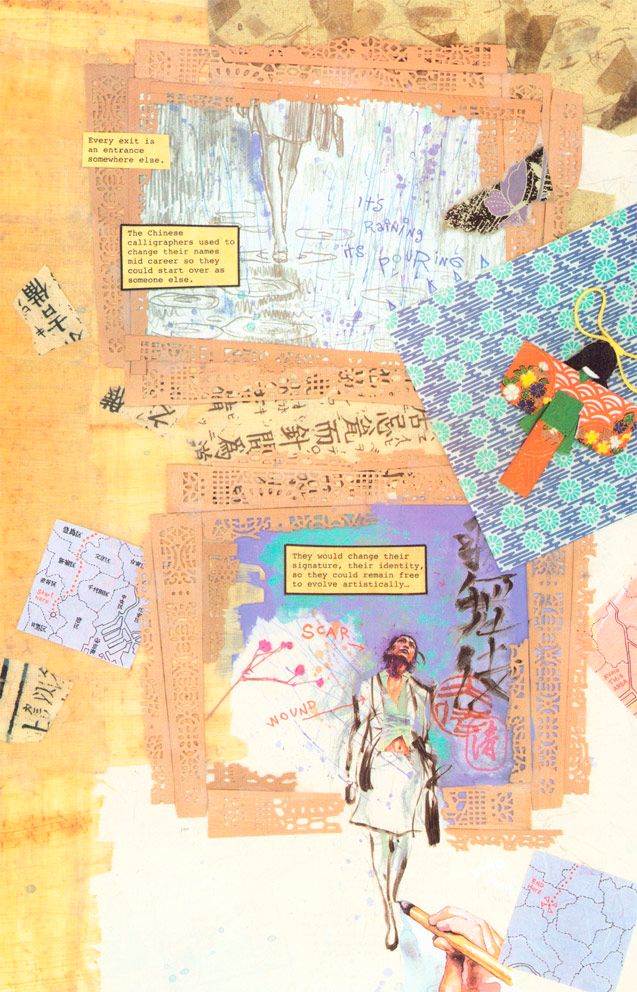
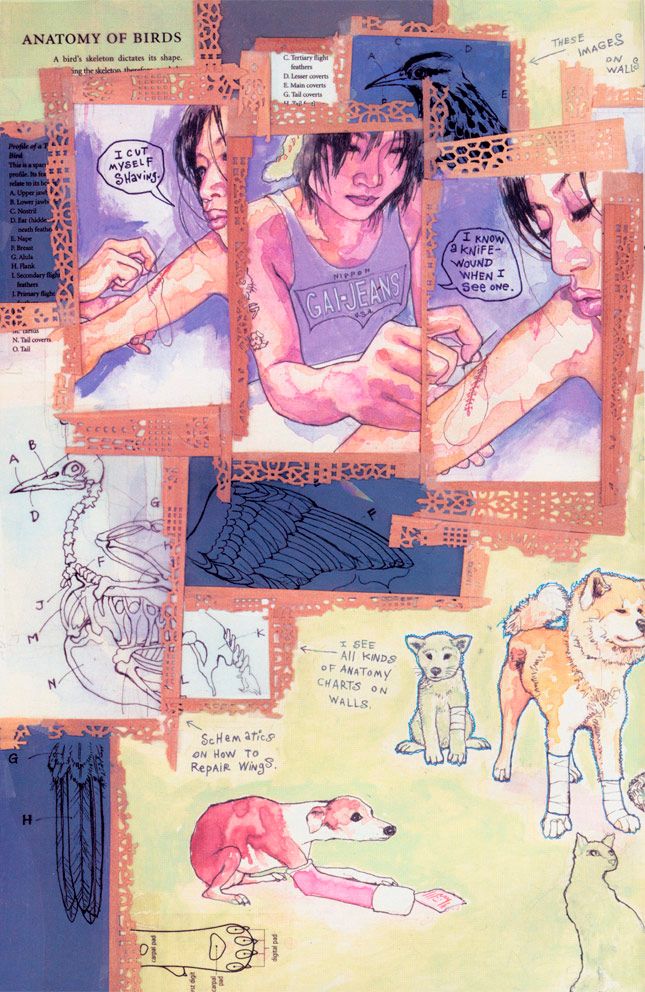
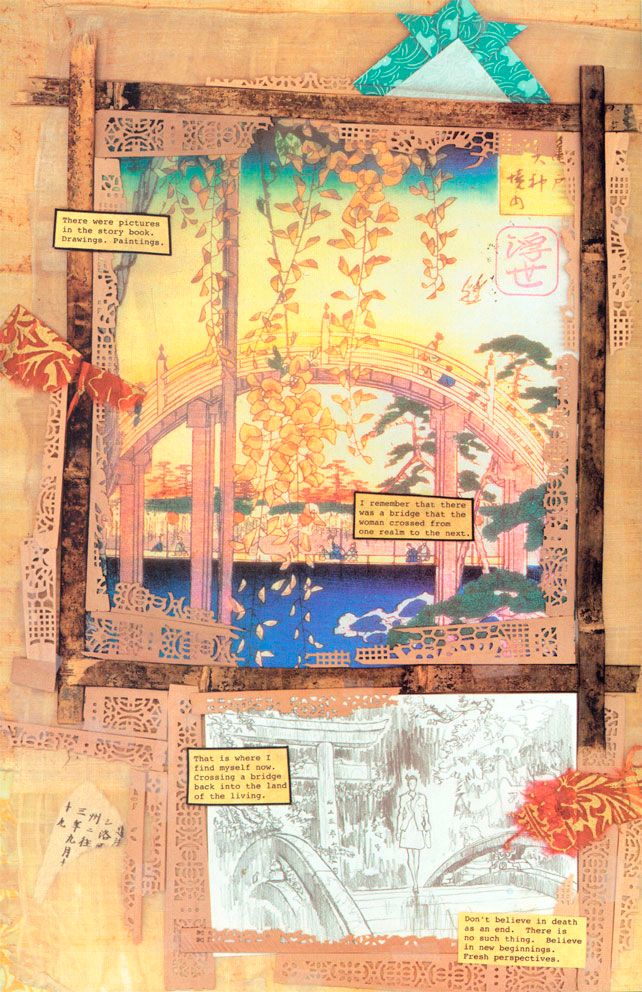
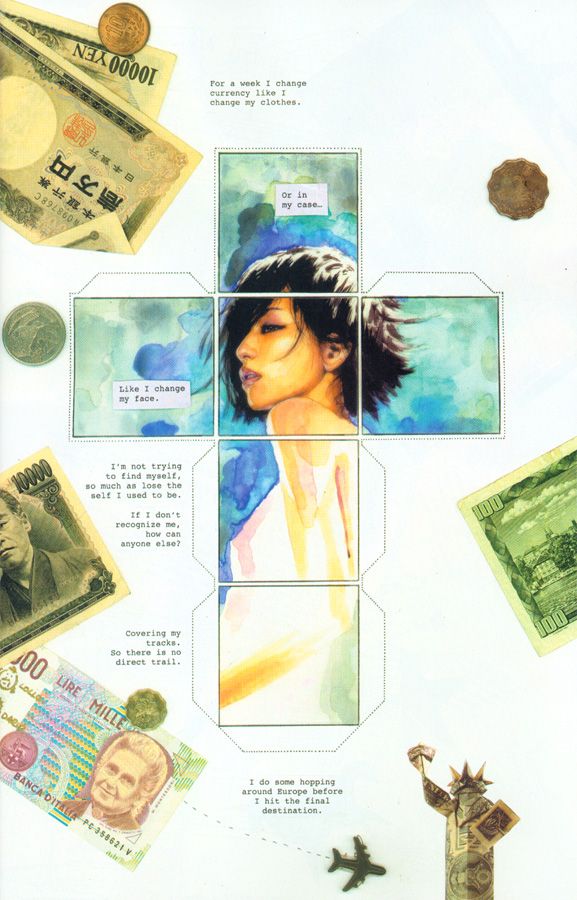
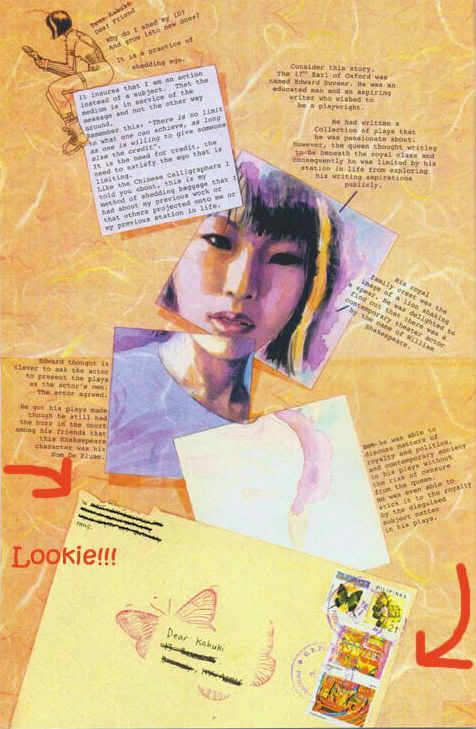
Highly recommended!
I have met David Mack a couple times at Comicon, and I’ve been meaning to ask him if he always intended from the beginning for the story to be about transformation and to move from standard comic style to collage. I like to think that it’s something he came up with as he went along, and the writing of the story transformed as he developed it. That the book evolved him as the story itself evolved.
On a plot level, the story begins in rather mainstream comic fashion. Kabuki is set slightly in the future, primarily in Japan. The main character, Kabuki, is one of a group of eight female assassins called The Noh who wear iconic masks and stylized costumes. They are a team managed by the government and sent out to instill fear and kill gangsters and various corporate criminals. However ... not all is as it appears. A multi-layered conspiracy ensues. Seven graphic novels complete the story.
[b:Kabuki Circle of Blood|89816|Kabuki, Vol. 1 Circle of Blood|David W. Mack|https://d202m5krfqbpi5.cloudfront.net/books/1386924796s/89816.jpg|1027]. Mack wrote and drew. Black & white. Has a grim, raw style. The art seems a bit underdeveloped to my eye. Has a bit of Sin City tone but more surreal. With more emphasis on emotions. The story is overall, fairly straightforward to this point.


[b:Kabuki Dreams|89813|Kabuki, Vol. 2 Dreams|David W. Mack|https://d202m5krfqbpi5.cloudfront.net/books/1388629721s/89813.jpg|86681]. Mack wrote and drew. Takes a huge leap forward in style and has more of the Mack signature look. Collage style begins, color is introduced. Blends pencil sketching, ink drawings, painting and even photography. This is a book of interior monologue and, as the title would lead you to believe, is trippy.



[b:Kabuki Masks of Noh|743521|Kabuki, Vol. 3 Masks of the Noh|David W. Mack|https://d202m5krfqbpi5.cloudfront.net/books/1390064424s/743521.jpg|729672]. Mack writes and draws some scenes, but this is primarily guest drawn. The style returns to black & white, but overall more refined, precise and graphic than Circle of Blood. Rick Mays draws a pretty phenomenal Scarab. The various artists seem to be chosen to help represent the style of each of the assassins. This sequence consists of short stories introducing us further to the other members of the Noh.



[b:Kabuki Skin Deep|89814|Kabuki, Vol. 4 Skin Deep|David W. Mack|https://d202m5krfqbpi5.cloudfront.net/books/1347219865s/89814.jpg|440299]. Mack returns to both draw and write. In Skin Deep his incredible artistic skills beginning to shine. He can morph like a chameleon from cartoonish renderings to realist representational paintings to pencil sketches.

[b:Kabuki Metamorphosis|89815|Kabuki, Vol. 5 Metamorphosis|David W. Mack|https://d202m5krfqbpi5.cloudfront.net/books/1347660123s/89815.jpg|18787]. Mack writes, draws, letters and designs. For the sheer brilliance on display, I think Metamorphosis is the most beautiful of the series and my favorite. The diversity of techniques is breathtaking.



[b:Kabuki Scarab Lost in Translation|98454|Kabuki, Vol. 6 Scarab, Lost in Translation|David W. Mack|https://d202m5krfqbpi5.cloudfront.net/books/1347752395s/98454.jpg|94908]. An action-packed side-step featuring everyone's favorite assassin, Scarab. Illustrated in graphic black & white by Rick Mays, the coolest artist from the Masks collection. Just as the art harkens to outstanding comic illustration style, it doesn't push the envelope in content or technique. A fun diversion.



[b:Kabuki The Alchemy|3155976|Kabuki, Vol. 7 The Alchemy|David W. Mack|https://d202m5krfqbpi5.cloudfront.net/books/1347738255s/3155976.jpg|3187674]. Mack takes his signature collage style even further, using cut up items and diverse materials including envelopes and letters sent to him from fans of the series to tell the existentialist, inspirational conclusion of Kabuki's epic story. Although visually, I prefer Metamorphosis, I truly admire The Alchemy for showing the potential of comics. Yes, many artists like R. Crumb and Chris Ware have achieved fame for non-superhero stories. But Mack essentially demonstrates the potential before our eyes to move beyond the dictates of the superhero form. A series that begins with ultra-violent superhumans fighting battles for stereotypical reasons ends with artistic explorations of our inner potential as creative beings. Kabuki moves beyond standard comic book “hero” tropes into a story of heroic action as self-transformation, moving beyond the dictatorship of the system, the fear of change and the psychological control of the past. The hero is one who evolves not one who kills everything. And Mack says we each have the potential, regardless of what has come before, to evolve. Perhaps best of all, the transformation that takes place goes much further than within the narrative; it is a transformation of the form of graphic storytelling. Now that is truly inspirational.






Highly recommended!
More...